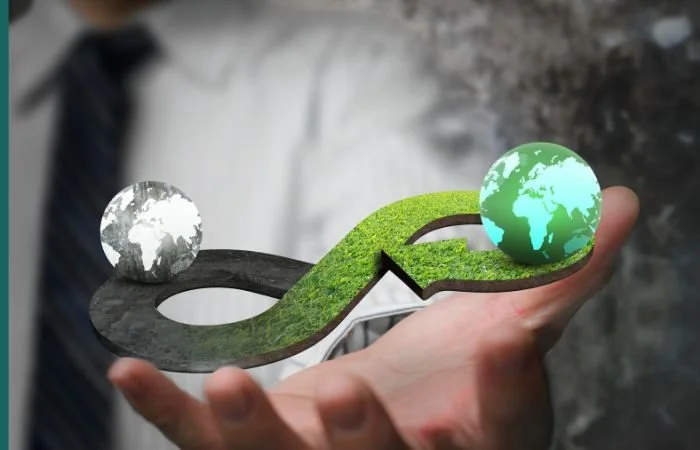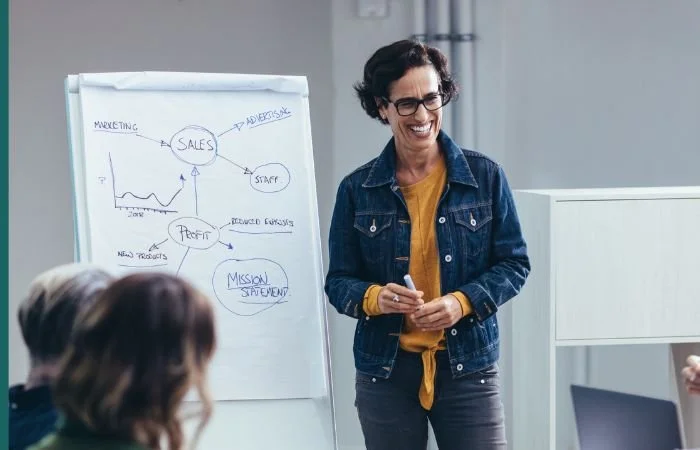Circular economy 101: What is it and why should businesses be using it?
Circular economy is the method I recommend when working with sustainability in a business. It is a discipline with a focus on the flow and stock of objects and resources and a distinct emphasis on getting the most value out of the resources we use by keeping them in use or stock for as long as possible while maintaining their value and utility. We should ideally also be aiming to elevate stock’s value to a higher level – this is often referred to as upcycling. This works best also accompanied by optimised production processes. Circular economy has also been considered another way of thinking about what, and how, to generate value.
Circular economy is another way of thinking about an economic system that far better matches both the fact that man exists as part of an ecosystem, not separated from it, and how we best create and deliver valuable solutions to our customers in an ever-changing world with increasing understanding of the range of the sustainability crisis we have brought ourselves and the planet into.
What you need to know about circular economy
Circularity is the principle governing nature, and until a few generations ago, it was also the underlying concept of societies. Resources were used and then used again. In the big picture, nothing was wasted. Resources came from nature, and after several cycles of use they went back to nature. Industrialisation changed that and in as little as seventy-ish years, we have almost completely abandoned this way of thinking. Consequently, we now live in a very resource inefficient world and billions of euros worth of materials are wasted every year.
If you think about it, it is difficult not to reach a conclusion that it is pretty stupid, and to perhaps even wonder what got us here. It is time to unlearn a few things and reconnect to the success formula for Homosapiens through more than 99% of the time we have existed – but in an updated version matching today’s world. That updated version is called the circular economy.
As the name indicates, it has its starting point in economic thinking and in many ways the correlation to a traditional business mindset is easy to see. In my experience it is quite easy to get businesspeople to buy into the circular business mindset once presented with it. It is a way of decoupling economic activity from the consumption of resources.
I differentiate between circular economy and circular business. The first is about working on a society (city, region, country, etc) to change the economy. The latter is about working on a specific business and utilising the principles and thinking to develop and grow the business to flourish and impact the world in a positive way.
There are several definitions of circular economy across the world. In Europe, the prevailing one is made by the Ellen MacArthur Foundation in the UK. I often build on their three core principles, but with a slight twist and some extensions, so I define it like this:
1. Design out waste and pollution in all phases of the life cycle.
2. Maximise value by keeping product and materials in use.
3. Prevent degeneration and regenerate natural systems and biodiversity.
4. Run everything on renewable energy.
How does circular economy compare in relation to other methods
People often ask me about circular economy in relation to other methods or focus areas that exist in the sustainability domain. There are few essential differences, as described above, with the ‘value creation mindset’ and ‘aiming for positive impact’ as the most important at this stage. Below is a brief description to make it easier to connect the dots if you or someone in the organisation (including the board) has another favourite method than the circular economy:
Sustainable Development Goals (SDGs): As the name indicates, this is about goals. Countless people look at them and can see themselves in one or more of the goals, but then feel it is equally hard to find out what to actually do. There are only goals here and no models, guides or other tools that will help you go from words to action. I prefer to see the SDGs as the menu card to choose the areas you would focus on – the ones that suit your competencies, business and heart the most. The circular economy is de facto goal number twelve – ‘responsible consumption and manufacturing’ and if you look at all the goals and subgoals and how they interact and link, you will find that goal number twelve is the one that has the highest number of interactions. It is a tool to utilise what will give you a business routed pathway forward for many of the environmental problems we are facing.
Environment, Social and Governance (ESG): An investor tool to evaluate performance of a company in terms of these three central focus areas. The underlying logic is that a company with a poor control and level of action on these key areas is a higher risk to invest in. Again, it sets the bar for where you want to go, but does not offer much guidance on how to get there. Use the circular economy thinking in your business and create business value with embedded environmental impact and it will give you better ratings as it will show how you clearly link your business and your effort on sustainability. Circular economy is a way to meet and exceed the ESG investors’ expectations by improving your business while making the world a slightly better place.
The EU taxonomy: This is the EU’s primary tool to direct massive funds to the green transition and a way of trying to minimise greenwashing in the financial sector. To define investments that qualify as sustainable, the EU has created a green classification system with six areas – one of them being ‘Transition to a circular economy’. The others are climate (adaptation as well as mitigation), protection of water and marine resources and pollution prevention and control. According to The Carbon Trust, for a product or service to qualify as sustainable it has to, ‘Make a substantial contribution to at least one of the EU’s climate and environmental objectives, while at the same time not significantly harming any of these objectives and meeting minimum social safeguards.’ Again, using the circular economy as a tool can provide you with a great starting point for your effort even if you focus on one of the other five objectives.
Sustainability: The triple bottom-line approach with people, planet and profit that we all know of. Because circular economy is rooted in business, it makes it a lot easier to end up with solutions that are good for all three.
Specific problem focus: For example, climate change or plastic. Many companies decide to focus on a specific problem in their sustainability effort. Climate change tops the list for good reasons, but plastics is another popular one. There are different ways to go about it, but by choosing the circular economy as the platform, you have significantly higher odds of both creating business value and environmental impact.








